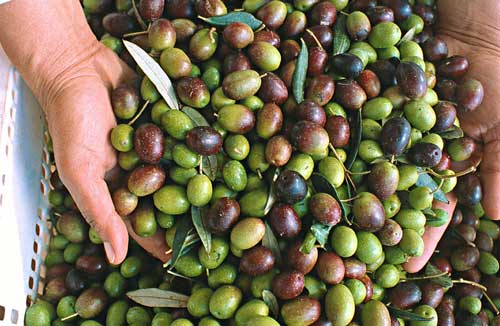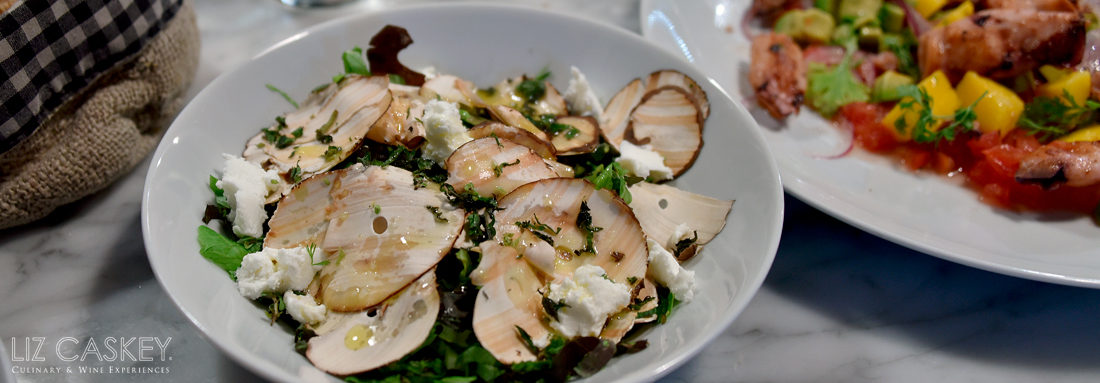
Today the 3rd annual Chilean Olive Oil “Summit” was held by Chileoliva, the Association of Chilean Olive Oil Producers. Most people (including many Chileans) don’t realize it, but olive oil in Chile is quickly becoming the next hottest gastronomic commodity, following the wine suit with the majority of production exported abroad and providing consumers with a great price-quality ratio. The focus of the event is for the whole industry to get together to share knowledge and experiences ranging from agricultural and planting issues to developing business models; and of course, a schmooze and networking session.
Sure, sounds interesting, but given it was a whole day endeavor, I had to prioritize so I opted to attend purely the hands-on (read: fun) part: the guided tasting. I am by no means an olive oil taster extraordinaire but I have been to my fair share. I must confess that I was a tad disappointed by the content of the lecture part. The presenter, an Italian “capo”, or in Chilean spanish “absolute master”, of olive oil, rambled on and on in untranslated Italian for a good while before actually getting to the tasting (which was in plastic cups, some of the effect was definitely lost).
Since olive oil tasting is less known than wine tasting, I thought I would give some tips to trying it at home. It really is a good time, especially before a dinner party. You can sop up the leftovers with sourdough or baguette and they pair beautifully with wine.
Olive Oil Tips: DO try this at home
Lesson 1: For good olive oil, just as with wine, the primary ingredients are key. Don’t buy crappy or cheap olive oil. Chances are it is rancid. Know what you are buying and try different brands and varieties. Just as with vino, styles, mixes, and olives vary. Just because it says “extra virgin” doesn’t guarantee anything, many places can buy bulk and bottle. Try to be educated about what you are buying.
Lesson 2: You may say, I don’t know what good olive oil is or how it should be. First clue or suspicion that an olive oil is a bomb: it smells like black olives. This is because rancid olive oil is made from fermenting olives (that’s right, those babies are cooking in their own juices long before they get to the press). Once again, primary ingredients. No spiffy Italian machinery will chemically improve olive oil if the olives aren’t perfect. A beautiful olive oil will have a fruity, herbaceous nose; slight bitterness on the palate; and a peppery note on the back of the throat. A balanced oil will have these harmlessly melded together, in varying strengths.
I am going to throw in a note here about rancid olive oil in general. Most of the world produces, sells, buys, and consumes “spoilt” olive oil. Spain is one of the major culprits of this, so in my personal experience, beware of those tinned Spanish olive oils. As we learned above, olive oil ironically should not taste nor smell like olives.
Lesson 3: Olive oil has a very short shelf life. Try to consume it as close as possible to the date when it is pressed and bottled. Do NOT employ wine aging tactics here. The curve towards spoilage is downwards (meaning it starts great and gets progressively less impressive over the course of its life). On average, olive oil from say 2005, should be consumed in 2005. Try this little experiment. Buy two bottles of a great cold press extra virgin oil you like, close to the date it is pressed and bottled (this is not as hard as it sounds, especially if you live in California). Try and consume one immediately (in Chile Harvest is in May so I am thinking this must be October/November in California or Italy). Save the other one for 6-8 months later and then try. The difference is literally palatable. Eat/drink up young.
Also, dark bottles go far towards prolonging the life of oil as it saves it from light exposure. However, if you are a hard core olive oil consumer (like most Italians who consume 21+ liters per year per PERSON), I doubt this ever becomes an issue.
Lesson 4: Taste all olive oil with hunger. Your palate is more receptive and the flavors will seem more intense. My fellow food writer friend Daniel Greve, who took a 10-day course on Olive oil tasting Rome, informed me of this little detail this morning–as we sat there fighting over the last baguette slice.
Tasting 101: Basic Technique (this will not be graded)
1. Real olive oil tastings use glass small cups, similar to rounded votive candle holders. These are shaded blue to mask the color of the oil as it is in unimportant in the evaluation of an oil. If you cannot find any, no problem. Just don’t make any final judgments based on color; it can be deceiving. The reason these little cups are rounded is that you can twist them in your hand to “heat up” the oil (more in number 3.).
2. Get some decent fresh bread (baguette or sourdough work well); or peeled and sliced green (Granny Smith) apples. You need these snacks between oils to refresh the palate. Personally, I find the acidity of the green apple much more refreshing and cleansing.
3. To get going, measure out a tablespoon or so (good drizzle if you guesstimate) into the glass cups. Take one of the cups in your hand. Grab it with all your fingers in a good grip, and turn right and left in your other hand, palm cupped. As I mentioned above, you are creating friction and therefore heat to slightly heat the olive oil. In professional olive oil courses, they have machines that do this, but remember, this is the “home” version. Turn the oil about 20 times, smelling the oil frequently for its fruity, herbaceous aromas.
4. Now to taste the oil. Just a little sip, but enough to cover the tongue but there is a trick to doing this right. Suck it! And when I mean suck it, as in draw in air, force it through your front teeth, moving your lips in what looks like a fake smile. It should make a loud hissing sound and you MUST use your facial muscles. This is no time to be shy. You are trying to cover the tongue and palate with the olive and perceive the largest amount of sensations possible. Once in your mouth, apart from the oil “texture” covering the mouth, you will also perceive some amount of bitterness (this is desirable in a good oil to a certain extent) and then, my favorite part, the prickly, peppery, spicy notes in the back of your throat.
You can spit or swallow here. I find spitting less desirable than with wine as it is not liquid and has less volume (okay, it can be downright gross). You “sip” so little, a few drops won’t hurt you so I suggest just swallowing it. In fact, most doctors would argue it is good for you.
Experiment. There are all kinds of great olive oils with different styles, “terroir”, olives, etc. I have found through trial and error that I love the really green, wild, spicy oils right off the press. Other people adore more balanced oils (where the bitterness and spiciness is less)–these tend to be more popular generallly as they appeal to a wide audience.
Buena suerte!












